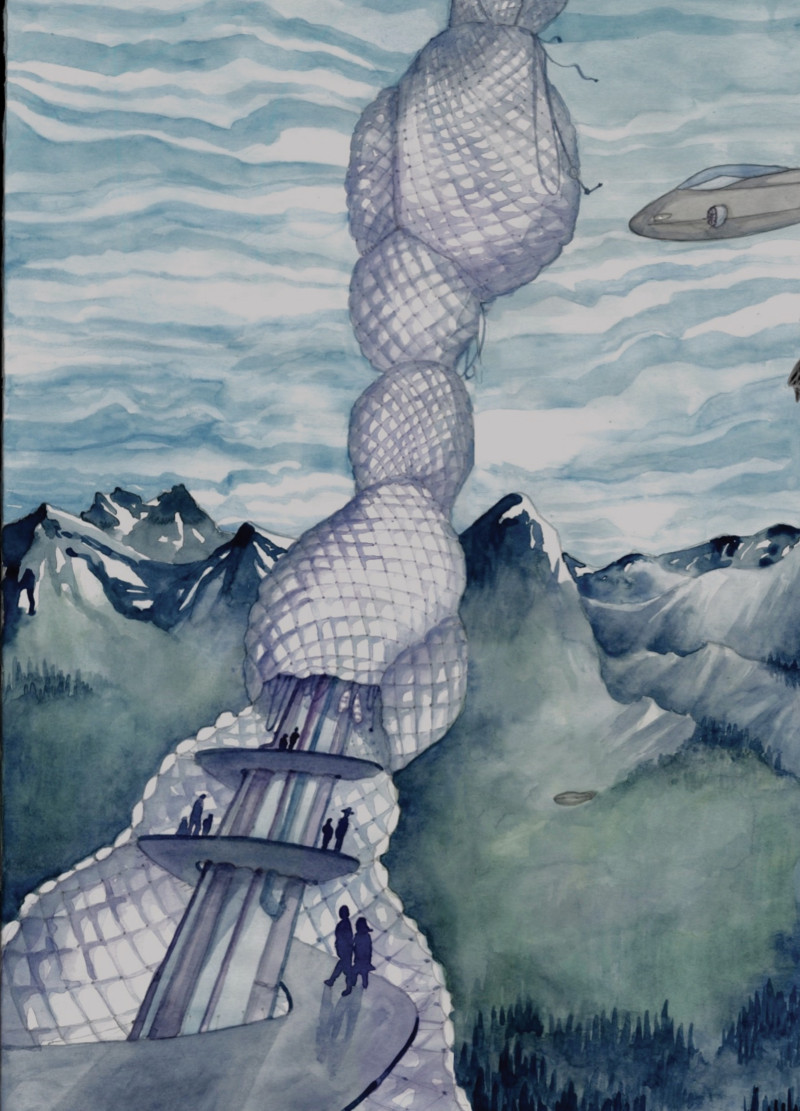5 key facts about this project
At its core, the floating power plant embodies the idea of harnessing renewable energy in a manner that minimizes impact on the environment. Its primary function is to generate clean energy while offering a unique residential experience. By incorporating floating architecture principles, the design minimizes ground-level disturbances and maximizes energy efficiency, creating a structure that is not only functional but also forward-thinking in its approach to urban living.
The design features a lightweight framework constructed with advanced materials, including hydrogen-filled balloons that provide structural integrity and flexibility. This innovative use of materials minimizes the building’s carbon footprint while allowing it to adapt to environmental conditions. The project utilizes photovoltaic foil for solar energy capture, alongside aerogel insulation to optimize energy efficiency. Such material choices highlight the project's commitment to sustainability and contemporary architectural practices.
One of the key characteristics of the floating power plant is its dynamic interaction with the environment. The building is designed to respond to varying weather conditions, showcasing two states: a compact form for calm days and an expanded form during windy conditions. This adaptability not only enhances energy production but also signifies a new architectural approach where structures leverage environmental forces to improve efficiency.
In addition to energy generation, the project integrates an innovative transportation system that enhances mobility within the structure. Levitation elevators allow for vertical movement, promoting energy efficiency, while aircraft docking stations provide alternative travel options, emphasizing a commitment to eco-friendly transportation. This multifunctional approach underscores the ambition to create a self-sustaining ecosystem that addresses both energy and mobility needs.
Living spaces within the floating power plant are uniquely conceptualized. Spherical sleeping capsules are designed to provide residents with comfort while offering panoramic views of the surroundings. Their accessibility via state-of-the-art levitation elevators enhances the experience of living in such a distinctive structure. Community spaces are also incorporated, fostering interaction among residents and promoting an awareness of sustainable practices and energy literacy.
The architectural design reflects a thoughtful consideration of its environment, respecting the natural landscape of Liechtenstein while introducing a modern aesthetic. The use of transparent membranes allows natural light to filter through, creating vibrant interior spaces. Additionally, the anchoring mechanism employed minimizes ground disturbance while ensuring structural stability, allowing the building to be resilient against extreme weather conditions.
Overall, this floating power plant project represents a significant step towards reimagining how architecture can interact with energy production and urban living. It encapsulates essential elements of sustainable design while presenting innovative architectural ideas. For those interested in learning more about the intricacies of this project, exploring the architectural plans, sections, and designs will provide deeper insights into the proposed facility and its potential impact on future architectural practices. Engaging with these elements will enhance understanding of the careful considerations taken in its design and functionality.


























